Who is the father of digital marketing?
Table of Contents Who Is the Father of Digital Marketing? The world of digital marketing is vast, and its evolution has been remarkable. But have you ever wondered, “Who is the father of digital marketing?” This question is both intriguing and essential for anyone who wants to understand the roots of this powerful field. At Bhartiyamarketing.com, we’re here to shed light on the visionary who paved the way for digital marketing as we know it today. The Pioneer of Digital Marketing When discussing “Who is the father of digital marketing?”, one name often stands out: Philip Kotler. Renowned as the “Father of Modern Marketing,” Kotler revolutionized traditional marketing concepts and laid the groundwork for digital marketing’s principles. Though Kotler’s contributions are foundational, the real leap in digital marketing began in the early 1990s with the advent of the internet and search engines. Many consider the emergence of digital platforms, led by innovators like Ray Tomlinson (creator of email) and others who advanced online communication, as key moments that shaped digital marketing. Philip Kotler: His Influence on Digital Marketing Philip Kotler didn’t invent digital marketing, but his principles form its backbone. His focus on customer-centric strategies resonates deeply in digital marketing. Key ideas from Kotler that continue to influence the digital world include: Targeting and Segmentation: Understanding customer behavior and preferences, now enhanced by digital tools like Google Analytics. Integrated Marketing: Combining traditional and online methods for a seamless approach. His work inspired countless marketers to adapt and innovate in the digital age. The Evolution of Digital Marketing To truly grasp “Who is the father of digital marketing?”, it’s essential to understand its timeline: 1990s – The Internet EraThe launch of search engines like Yahoo and Google marked the beginning of search marketing. Email became the first widely used digital marketing tool. 2000s – Social Media Takes OverPlatforms like Facebook and Twitter transformed how businesses connect with audiences. 2010s – Mobile and AI RevolutionWith smartphones and AI-driven tools, digital marketing became more personalized and efficient. Today – Data-Driven StrategiesNow, marketers rely on data analytics, automation, and cutting-edge technologies to deliver impactful campaigns. Why Digital Marketing Matters Today Digital marketing continues to grow as businesses realize its potential to connect with global audiences. But why is it so important? Wider Reach: It allows companies to target specific audiences worldwide. Cost-Effective: Compared to traditional advertising, digital marketing is more budget-friendly. Measurable Results: Tools like Google Ads and social media insights help track campaign performance. Personalization: AI and analytics enable customized user experiences. At Bhartiyamarketing.com, we help businesses harness the power of digital marketing to achieve their goals. Bhartiyamarketing.com: Your Digital Marketing Partner Whether it’s SEO, social media, or email marketing, our team at Bhartiyamarketing.com specializes in crafting strategies that deliver results. Inspired by pioneers like Philip Kotler, we combine proven principles with modern tools to elevate your brand’s online presence. Conclusion: Who Is the Father of Digital Marketing? While Philip Kotler is celebrated as the “Father of Modern Marketing,” digital marketing is the result of contributions from countless innovators over decades. From the invention of email to the rise of social media and AI, the evolution of this field is a testament to human creativity and technological progress. At Bhartiyamarketing.com, we honor this legacy by helping businesses thrive in the digital landscape. Let’s shape the future of marketing together! HOME
What do backlinks mean?
Table of Contents What Do Backlinks Mean? Backlinks are a crucial aspect of search engine optimization (SEO) and digital marketing, yet they remain a concept misunderstood by many. If you’re wondering, “What do backlinks mean?”, this guide by Bhartiyamarketing.com is here to help you decode their importance, how they work, and why they matter for your website’s ranking. What Are Backlinks? In simple terms, backlinks are incoming links from one website to another. They act as a vote of confidence from one site to yours. When another website links to your content, it’s essentially telling search engines, “Hey, this content is valuable and worth referencing.” Search engines like Google view backlinks as a signal of a website’s credibility, authority, and relevance, making them a vital part of your SEO strategy. Why Are Backlinks Important? If you’re still asking, “What do backlinks mean for my website?”, here’s why they are essential: Boost Search Engine RankingsWebsites with high-quality backlinks are more likely to rank on the first page of Google. Backlinks signal to search engines that your site is a trusted resource, improving its visibility. Increase Referral TrafficBacklinks not only help with SEO but also drive traffic directly to your site. When users click on a link from another website, they are referred to your page, potentially increasing leads and conversions. Build Domain AuthorityA website with quality backlinks earns higher domain authority over time, which helps it rank for competitive keywords. Enhance Online CredibilityBacklinks act as endorsements, showing that other sites trust your content enough to link to it. Types of Backlinks Understanding the types of backlinks is crucial to knowing what backlinks mean in your SEO strategy: Do-Follow BacklinksThese are the most valuable backlinks for SEO. They pass on “link juice”, which helps in improving rankings. No-Follow BacklinksWhile they don’t pass link juice, they still drive traffic and improve online visibility. Internal BacklinksLinks within your own website enhance navigation and user experience while spreading link equity. High-Authority BacklinksBacklinks from reputable sites like Forbes or BBC carry more weight compared to links from smaller or less credible sites. How to Earn Quality Backlinks At Bhartiyamarketing.com, we specialize in helping businesses build a robust backlink profile. Here are some ways you can gain high-quality backlinks: Create Exceptional ContentWrite blog posts, guides, or case studies that provide value to your audience. Content that solves problems is more likely to be shared and linked to by other websites. Guest BloggingPublish articles on reputable industry blogs to earn backlinks and expand your reach. Leverage Social MediaPromote your content on social platforms to encourage sharing and linking. Reach OutContact relevant websites and offer to collaborate or share useful content they can link to. Use ToolsPlatforms like Ahrefs and SEMrush help you analyze your backlink profile and find opportunities for growth. Common Backlink Mistakes to Avoid When diving into what backlinks mean for your SEO, avoid these pitfalls: Buying low-quality backlinks from spammy sites. Using black-hat SEO techniques that violate Google’s guidelines. Ignoring the importance of relevance when building links. Conclusion: What Do Backlinks Mean for Your Business? Backlinks are the backbone of a strong SEO strategy. They help you rank higher on search engines, attract more traffic, and establish online credibility. However, not all backlinks are created equal—quality matters more than quantity. At Bhartiyamarketing.com, we understand the power of backlinks and how to use them effectively to boost your online presence. Contact us today to start building a high-quality backlink profile that drives results. This blog perfectly captures the essence of backlinks and their value. I feel more confident about improving my SEO strategy now. Great work, team Bhartiyamarketing
Which course is best in digital marketing?
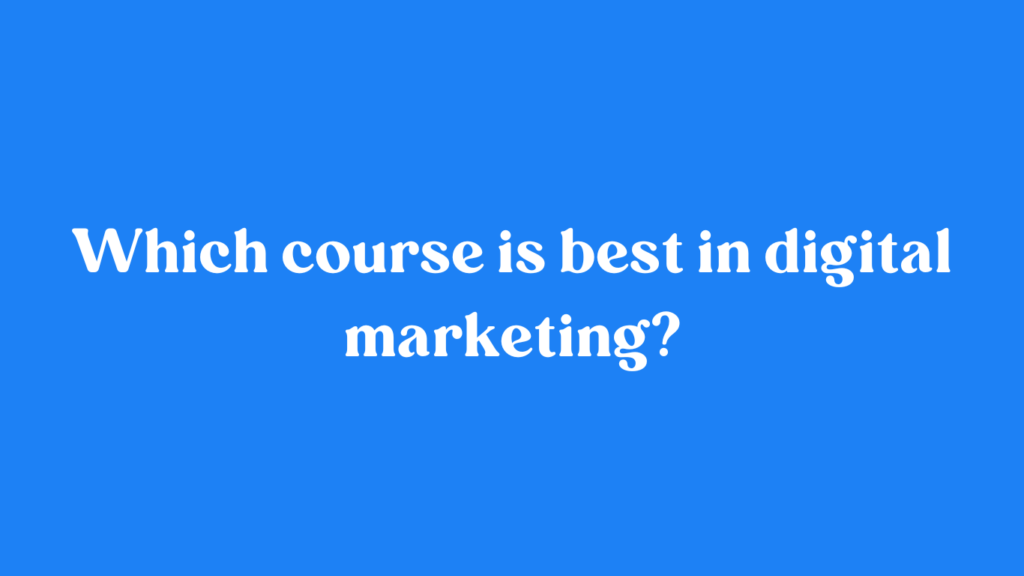
Table of Contents Which Course is Best in Digital Marketing? In today’s competitive world, digital marketing has become a vital part of every business strategy. Whether you’re a beginner looking to break into the field or a professional aiming to upskill, choosing the right course is crucial to your success. But which course is best in digital marketing? In this blog, we will explore some of the top digital marketing courses that can help you gain the knowledge and skills you need to excel in this dynamic industry. At Bhartiyamarketing.com, we believe in helping individuals and businesses find the right educational path to achieve their marketing goals. Why Digital Marketing Courses Are Essential Before diving into which course is best, it’s important to understand why digital marketing courses are essential: Stay Ahead of the Competition: The digital marketing landscape is always evolving. A good course will teach you the latest trends, tools, and techniques. Career Advancement: Whether you want to pursue a career in digital marketing or improve your existing skills, a quality course can boost your resume. Cost-Effective Marketing: Digital marketing helps businesses reach a larger audience without breaking the bank. By learning the ropes, you can deliver impactful results. At Bhartiyamarketing.com, we emphasize practical learning and real-world applications, which are critical for success in digital marketing. Types of Digital Marketing Courses There are numerous digital marketing courses available online, but they can be grouped into the following categories based on skill level and specialization: 1. Beginner-Level Digital Marketing Courses If you’re new to digital marketing, a beginner-level course will help you understand the fundamentals: Course Content: Introduction to SEO, social media marketing, content marketing, email marketing, PPC, and digital analytics. Duration: Usually a few weeks to a couple of months. Who it’s for: Ideal for those starting out in the field. Some popular beginner courses include: Google Digital Garage: Learn the basics of digital marketing for free. HubSpot Academy: Offers free courses on content marketing and inbound marketing. These courses offer a great starting point, and at Bhartiyamarketing.com, we recommend them as a foundational step for those new to digital marketing. 2. Advanced Digital Marketing Courses For those who already have a basic understanding of digital marketing and want to dive deeper, advanced courses are the way to go. Course Content: In-depth topics such as advanced SEO strategies, email automation, marketing funnels, data analytics, and conversion optimization. Duration: Typically 3-6 months. Who it’s for: Ideal for marketers looking to specialize or take their skills to the next level. Some popular advanced courses include: Simplilearn’s Digital Marketing Specialist Program: Offers comprehensive training in various areas of digital marketing, including SEO, SEM, email marketing, and more. Digital Marketing Institute: Provides globally recognized certifications that can help you stand out in the job market. At Bhartiyamarketing.com, we focus on advanced digital marketing strategies, helping businesses and individuals sharpen their skills and drive impactful results. 3. Niche Digital Marketing Courses Sometimes, you may want to specialize in one area of digital marketing. Here are some niche courses you may consider: SEO Courses Course Content: In-depth training in keyword research, on-page SEO, link-building strategies, and technical SEO. Duration: 1-3 months. Who it’s for: Perfect for those looking to become SEO specialists. Social Media Marketing Courses Course Content: Learn how to manage social media campaigns, create engaging content, and measure performance on platforms like Facebook, Instagram, LinkedIn, and Twitter. Duration: 1-2 months. Who it’s for: Ideal for social media enthusiasts who want to create effective campaigns. PPC Advertising Courses Course Content: Learn how to run effective pay-per-click campaigns on Google Ads, Bing, and other advertising platforms. Duration: 2-3 months. Who it’s for: Great for those who want to master paid advertising strategies. How to Choose the Best Course for You 1. Assess Your Current Knowledge Evaluate your current skill set and experience level. If you’re just starting out, look for beginner courses that will cover the basics. For those with some experience, advanced or niche courses may be more appropriate. 2. Set Clear Goals Do you want to become an SEO expert, social media marketer, or a well-rounded digital marketer? Choose a course based on your interests and career goals. 3. Check Reviews and Reputation Before enrolling, check the reviews and reputation of the course provider. Look for feedback from past students to ensure the course offers valuable content and hands-on experience. 4. Consider Practical Experience At Bhartiyamarketing.com, we emphasize practical experience. Make sure the course you choose includes real-world projects, case studies, and the opportunity to apply what you’ve learned. Why Choose Bhartiyamarketing.com for Digital Marketing Courses? At Bhartiyamarketing.com, we provide hands-on, industry-focused digital marketing courses designed to meet the needs of today’s businesses: Practical Learning: We emphasize real-world applications and case studies. Expert Guidance: Learn from experienced professionals who have worked on successful digital marketing campaigns. Personalized Support: Get one-on-one coaching and guidance tailored to your learning needs. Conclusion Which course is best in digital marketing? The right course depends on your current skill level, career goals, and areas of interest. Whether you’re starting from scratch, looking to specialize, or aiming for advanced knowledge, there’s a course for you. At Bhartiyamarketing.com, we can guide you through your digital marketing journey, offering training that aligns with industry needs and equips you with the skills to succeed. 💬 Let’s Talk About Your Learning Journey Which area of digital marketing are you most interested in? Or, if you’ve already taken a course, what did you learn? Share your thoughts, experiences, and questions in the comments below. Let’s inspire and learn together!
How to use WhatsApp for marketing?
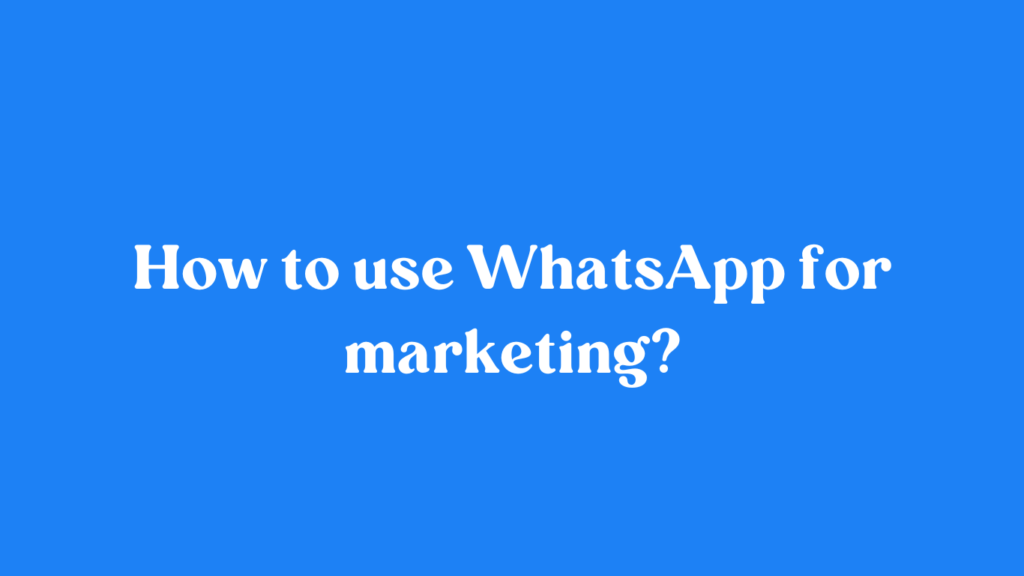
Table of Contents How to Use WhatsApp for Marketing? In the age of instant messaging, WhatsApp has emerged as one of the most popular communication platforms worldwide. But did you know that WhatsApp can also be a powerful tool for marketing your business? In this blog, we will discuss how to use WhatsApp for marketing and why it’s an excellent strategy for businesses looking to engage with customers in a more personal, direct, and effective way. At Bhartiyamarketing.com, we help businesses utilize WhatsApp marketing to its fullest potential and grow their online presence. Why Use WhatsApp for Marketing? WhatsApp isn’t just for personal conversations—it has become a business tool that can be leveraged for direct communication with customers, lead generation, customer support, and much more. Here’s why WhatsApp is an excellent choice for marketing: Massive Reach: WhatsApp has over 2 billion users globally, making it one of the most widely used messaging apps. High Engagement: People check their WhatsApp messages multiple times a day, so marketing through this platform ensures your messages get noticed. Personalized Communication: WhatsApp allows businesses to communicate with customers on a more personal level, making the interaction feel less like marketing and more like a conversation. At Bhartiyamarketing.com, we use WhatsApp to create tailored marketing campaigns that boost engagement and drive results. How to Use WhatsApp for Marketing 1. Create a WhatsApp Business Account To start using WhatsApp for marketing, you’ll first need to set up a WhatsApp Business Account. This free app is specifically designed for businesses, allowing you to set up: A business profile with important details such as your business name, description, contact info, and website. Quick replies and automated messages for customer convenience. Labels to organize chats, making it easier to manage customer interactions. By creating a professional WhatsApp profile, you build trust and credibility with your audience. 2. Build a Contact List To effectively market on WhatsApp, you need to have a list of contacts who have opted in to receive your messages. This can be done by: Adding a WhatsApp contact button on your website and social media profiles. Using lead magnets, such as discounts or exclusive content, to encourage users to sign up for your WhatsApp updates. Asking existing customers to share their contact details so you can keep them updated on new products or services. At Bhartiyamarketing.com, we assist businesses in building targeted contact lists by using effective opt-in strategies that enhance customer engagement. 3. Send Personalized Messages One of the best features of WhatsApp marketing is the ability to send personalized messages. You can: Send product updates, promotions, and offers directly to your customers. Use customer data to tailor messages based on their preferences, increasing the chance of engagement. Maintain a human touch by engaging in real-time conversations with your customers. Personalized communication helps build stronger relationships with your audience, resulting in higher conversion rates. 4. Broadcast Lists for Mass Messaging WhatsApp allows you to send messages to multiple recipients at once through Broadcast Lists. This feature lets you send promotional updates, event invitations, and other important announcements to several contacts without creating a group. Make sure your contacts have saved your number in their phone to receive Broadcast messages, as this ensures better deliverability. 5. Provide Customer Support WhatsApp isn’t just for sending promotional messages—it’s also a great tool for customer service. By offering support through WhatsApp, you can: Respond to customer inquiries quickly and efficiently. Resolve issues in real-time, improving customer satisfaction. Share FAQs, documents, and product details directly with customers. At Bhartiyamarketing.com, we integrate WhatsApp customer support into our client strategies to improve user experience and drive customer loyalty. 6. Run WhatsApp Ads WhatsApp ads can be run through Facebook’s Ads Manager, allowing you to create ads that redirect users to your WhatsApp chat. This is a great way to drive traffic and engage potential customers directly. By using targeted ads, you can increase the number of people reaching out to you via WhatsApp, enhancing your chances of conversion. 7. Utilize WhatsApp Status Updates WhatsApp’s Status feature allows you to post images, videos, and text updates that disappear after 24 hours. You can use this feature to: Share time-sensitive promotions or offers. Showcase behind-the-scenes content, creating a personal connection with your audience. Promote new products, services, or events. WhatsApp Status provides an excellent way to keep your audience engaged with fresh, real-time updates. Why Choose Bhartiyamarketing.com for WhatsApp Marketing? At Bhartiyamarketing.com, we offer: Tailored WhatsApp marketing strategies that align with your business goals. Help in setting up and managing WhatsApp Business accounts. Innovative ways to grow your contact list and engage your audience. Advanced analytics to track and optimize your WhatsApp campaigns. Our goal is to help you leverage WhatsApp marketing to build a strong relationship with your customers and achieve your business objectives. Conclusion How to use WhatsApp for marketing? It’s all about creating a personal, direct, and meaningful connection with your audience. With features like Broadcast Lists, personalized messaging, customer support, and WhatsApp Status, the platform is a powerful tool to grow your business. Whether you’re looking to increase engagement, drive sales, or provide customer support, WhatsApp marketing has you covered. Ready to take your marketing to the next level with WhatsApp? Partner with Bhartiyamarketing.com, and let’s build an impactful WhatsApp marketing strategy that works for your business! 💬 We’d Love to Hear From You! How are you using WhatsApp to market your business? Or, if you’re just getting started, what challenges do you face? Share your thoughts and experiences in the comments below. Let’s have a conversation and learn together! HOME
How do I brand myself online?
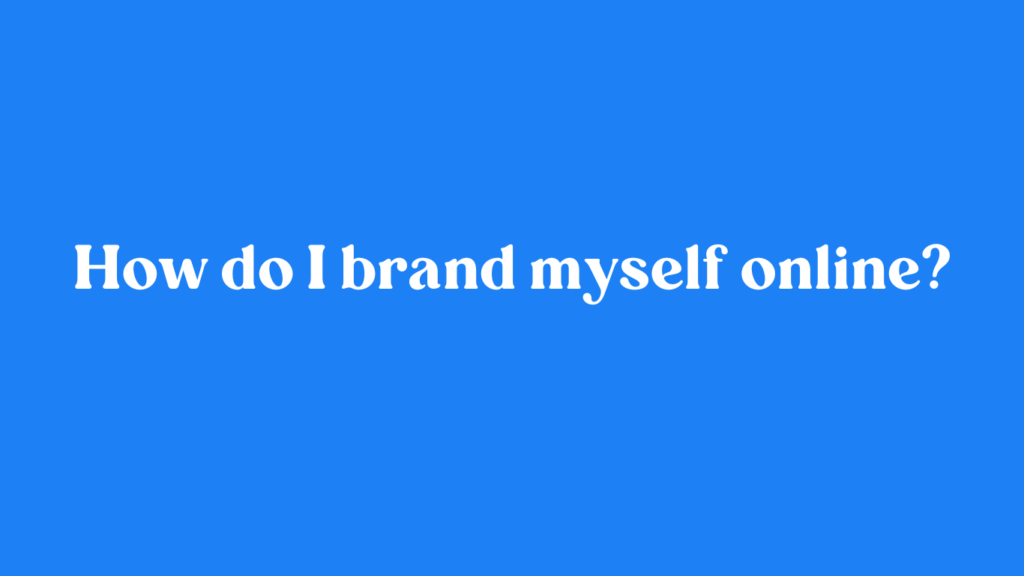
Table of Contents How Do I Brand Myself Online? In today’s digital-first world, building your online brand is not just an option—it’s a necessity. Whether you’re a professional, entrepreneur, or influencer, your online presence defines how people perceive you. But how do I brand myself online? It’s more than creating a fancy profile or sharing posts. It’s about building a consistent and authentic presence that resonates with your audience. At Bhartiyamarketing.com, we help individuals and businesses create impactful online brands that leave a lasting impression. What Does Online Branding Mean? Online branding is the process of creating a unique identity for yourself in the digital world. This includes: Crafting your personal story. Highlighting your expertise. Connecting with your audience. Maintaining consistency across platforms. Your online brand is your digital reputation. It’s what people think about you when they see your profile, read your content, or interact with your posts. Steps to Brand Yourself Online 1. Define Your Unique Value Proposition (UVP) What makes you stand out? Your UVP is your unique story, skills, and expertise. Ask yourself: What am I passionate about? What can I offer that others can’t? For example, if you’re a digital marketer, highlight your ability to drive results through innovative campaigns. 2. Choose Your Niche A strong brand speaks to a specific audience. Define your niche to attract the right followers and opportunities. Are you a tech enthusiast? A fitness coach? A motivational speaker? Pick a niche and stick to it. 3. Optimize Your Social Media Profiles Your social media profiles are often the first impression people get of your brand. Ensure they are: Professional: Use a high-quality profile picture and a clear bio. Consistent: Use the same handle, tone, and visuals across platforms. Optimized: Add relevant keywords to your bio so people can find you easily. 4. Create High-Value Content Content is king when it comes to online branding. Share content that reflects your expertise and resonates with your audience. Types of content include: Blogs and articles. Videos and live sessions. Infographics and case studies. Social media posts and stories. 5. Engage with Your Audience Online branding is a two-way street. Engage with your followers by: Replying to comments. Answering questions. Participating in discussions. At Bhartiyamarketing.com, we believe authentic engagement builds trust and strengthens your brand. 6. Build a Personal Website A website acts as your digital business card. It should: Showcase your portfolio. Highlight your achievements. Include a blog to share insights. A well-designed website increases your credibility and helps you stand out. 7. Network Online Networking opens doors to collaborations and growth opportunities. Join industry-specific groups. Connect with influencers in your niche. Collaborate with like-minded professionals. 8. Monitor and Improve Your Brand Use analytics tools to monitor your online presence and adjust your strategies based on performance. Which posts perform best? What feedback are you receiving? Continuous improvement ensures your brand stays relevant and impactful. Why Choose Bhartiyamarketing.com for Branding? At Bhartiyamarketing.com, we: Craft personalized branding strategies tailored to your goals. Optimize your social media profiles and content. Provide insights to help you grow your digital presence. With our expertise, branding yourself online becomes a seamless and rewarding journey. Conclusion How do I brand myself online? The answer lies in authenticity, consistency, and strategy. By defining your unique identity, creating valuable content, and engaging with your audience, you can build a powerful online brand that stands the test of time. Are you ready to take control of your online reputation and make a lasting impact? Let Bhartiyamarketing.com help you shine in the digital world! 💬 Let’s Talk About Your Brand What steps have you taken to build your online brand? Are you struggling with something specific? Share your experiences and questions in the comments below. Let’s inspire and learn from each other! HOME
What do you mean by e marketing?
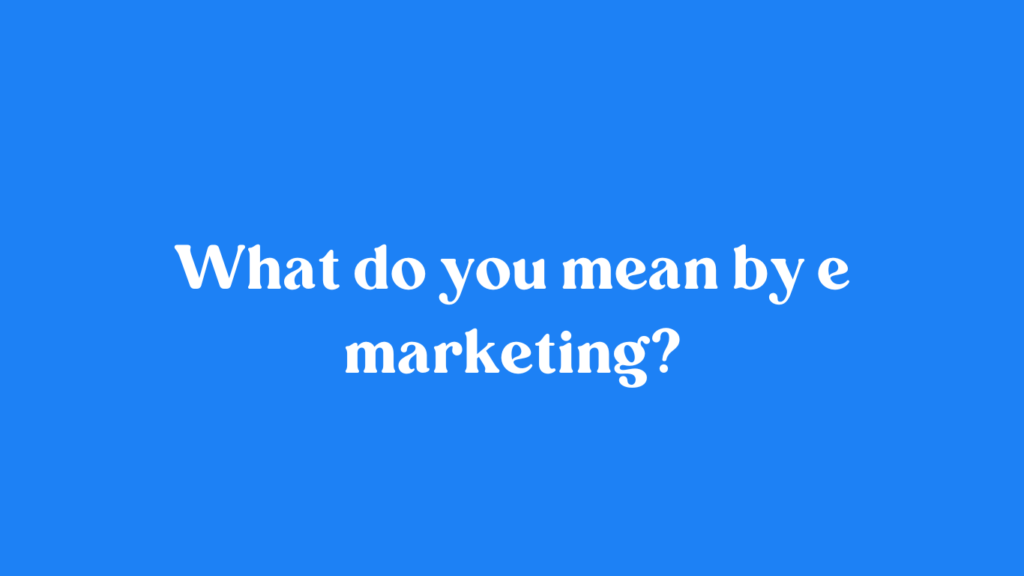
Table of Contents What is the 5-5-5 Marketing Strategy? The 5-5-5 marketing strategy is a unique and powerful framework that simplifies marketing efforts while maximizing results. This innovative approach focuses on three sets of five key elements, creating a structured and actionable plan for businesses to achieve their marketing goals effectively. If you’re wondering how this strategy works and why it’s gaining popularity, read on to discover the insights and benefits. At Bhartiyamarketing.com, we use this strategy to craft impactful campaigns that drive success. Breaking Down the 5-5-5 Marketing Strategy The 5-5-5 marketing strategy revolves around these three pillars: 1. Identify 5 Target Audiences To make your campaigns more effective, focus on five key customer segments. These can be based on: Demographics: Age, gender, location. Behavior: Buying patterns, interests. Pain Points: What problems your product or service solves. At Bhartiyamarketing.com, we help businesses deeply understand their target audiences to ensure their message resonates. 2. Create 5 Key Messages Craft five core messages that align with your audience’s needs and preferences. These should: Highlight Benefits: Show how your product/service adds value. Address Pain Points: Solve specific problems. Use Emotional Triggers: Connect with your audience on a deeper level. 3. Leverage 5 Marketing Channels Diversify your outreach by utilizing five key channels that suit your audience. Popular choices include: Social Media: Facebook, Instagram, LinkedIn. Email Marketing: Personalized campaigns. Search Engine Marketing (SEM): Paid ads on Google. Content Marketing: Blogs, videos, infographics. Influencer Marketing: Collaborate with industry leaders. Using multiple channels ensures maximum visibility and engagement. Bhartiyamarketing.com specializes in multichannel strategies to amplify your reach. Why Use the 5-5-5 Marketing Strategy? This strategy is perfect for businesses of all sizes because it: Simplifies Planning: Breaking tasks into groups of five makes marketing manageable. Enhances Focus: Ensures efforts are directed at high-priority areas. Maximizes Impact: Reaches a broader audience effectively. How Bhartiyamarketing.com Implements the 5-5-5 Strategy At Bhartiyamarketing.com, we: Research: Identify the most lucrative target audiences. Strategize: Develop compelling messages tailored to audience needs. Execute: Utilize a mix of channels to deliver those messages effectively.Our approach ensures that every step of the 5-5-5 strategy delivers measurable results. Success Stories with the 5-5-5 Strategy Businesses using the 5-5-5 strategy have seen impressive results, including: Increased ROI: More focused efforts lead to better returns. Stronger Brand Loyalty: Personalized messaging builds trust and engagement. Expanded Reach: Multi-channel campaigns capture diverse audiences. Conclusion So, what is the 5-5-5 marketing strategy? It’s a simplified yet powerful framework that helps businesses achieve more with focused efforts. By identifying target audiences, crafting meaningful messages, and leveraging multiple channels, this strategy ensures your marketing efforts hit the mark. Are you ready to implement the 5-5-5 strategy and grow your business? Let Bhartiyamarketing.com guide you every step of the way. Together, we’ll transform your marketing campaigns into success stories! 💬 What Do You Think? Have you tried the 5-5-5 marketing strategy, or are you planning to? Share your thoughts, experiences, or questions in the comments below. Let’s discuss how this framework can elevate your marketing game! HOME
What is 5 5 5 marketing strategy?
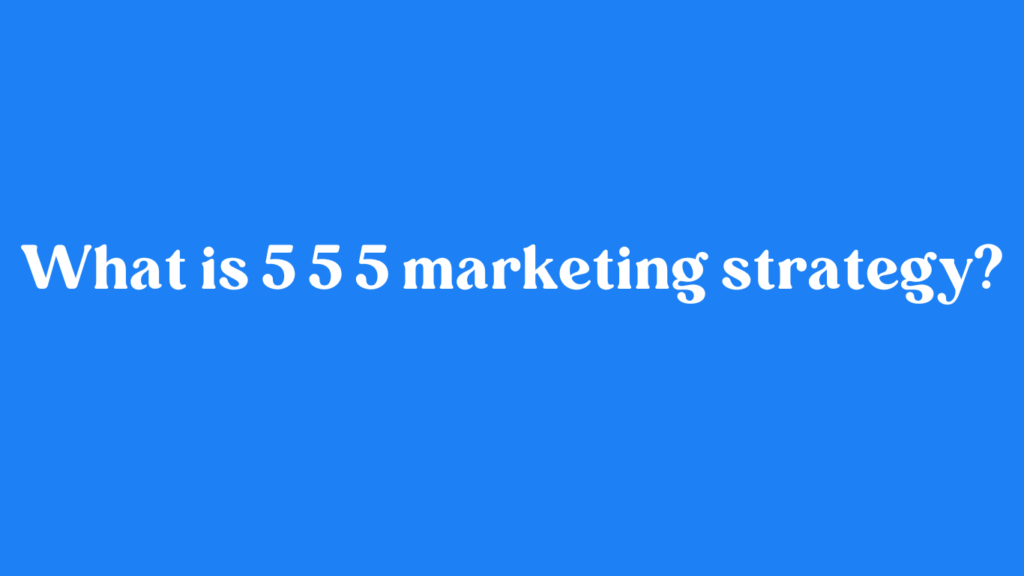
Table of Contents What is the 5-5-5 Marketing Strategy? The 5-5-5 marketing strategy is a unique and powerful framework that simplifies marketing efforts while maximizing results. This innovative approach focuses on three sets of five key elements, creating a structured and actionable plan for businesses to achieve their marketing goals effectively. If you’re wondering how this strategy works and why it’s gaining popularity, read on to discover the insights and benefits. At Bhartiyamarketing.com, we use this strategy to craft impactful campaigns that drive success. Breaking Down the 5-5-5 Marketing Strategy The 5-5-5 marketing strategy revolves around these three pillars: 1. Identify 5 Target Audiences To make your campaigns more effective, focus on five key customer segments. These can be based on: Demographics: Age, gender, location. Behavior: Buying patterns, interests. Pain Points: What problems your product or service solves. At Bhartiyamarketing.com, we help businesses deeply understand their target audiences to ensure their message resonates. 2. Create 5 Key Messages Craft five core messages that align with your audience’s needs and preferences. These should: Highlight Benefits: Show how your product/service adds value. Address Pain Points: Solve specific problems. Use Emotional Triggers: Connect with your audience on a deeper level. 3. Leverage 5 Marketing Channels Diversify your outreach by utilizing five key channels that suit your audience. Popular choices include: Social Media: Facebook, Instagram, LinkedIn. Email Marketing: Personalized campaigns. Search Engine Marketing (SEM): Paid ads on Google. Content Marketing: Blogs, videos, infographics. Influencer Marketing: Collaborate with industry leaders. Using multiple channels ensures maximum visibility and engagement. Bhartiyamarketing.com specializes in multichannel strategies to amplify your reach. Why Use the 5-5-5 Marketing Strategy? This strategy is perfect for businesses of all sizes because it: Simplifies Planning: Breaking tasks into groups of five makes marketing manageable. Enhances Focus: Ensures efforts are directed at high-priority areas. Maximizes Impact: Reaches a broader audience effectively. How Bhartiyamarketing.com Implements the 5-5-5 Strategy At Bhartiyamarketing.com, we: Research: Identify the most lucrative target audiences. Strategize: Develop compelling messages tailored to audience needs. Execute: Utilize a mix of channels to deliver those messages effectively.Our approach ensures that every step of the 5-5-5 strategy delivers measurable results. Success Stories with the 5-5-5 Strategy Businesses using the 5-5-5 strategy have seen impressive results, including: Increased ROI: More focused efforts lead to better returns. Stronger Brand Loyalty: Personalized messaging builds trust and engagement. Expanded Reach: Multi-channel campaigns capture diverse audiences. Conclusion So, what is the 5-5-5 marketing strategy? It’s a simplified yet powerful framework that helps businesses achieve more with focused efforts. By identifying target audiences, crafting meaningful messages, and leveraging multiple channels, this strategy ensures your marketing efforts hit the mark. Are you ready to implement the 5-5-5 strategy and grow your business? Let Bhartiyamarketing.com guide you every step of the way. Together, we’ll transform your marketing campaigns into success stories! 💬 What Do You Think? Have you tried the 5-5-5 marketing strategy, or are you planning to? Share your thoughts, experiences, or questions in the comments below. Let’s discuss how this framework can elevate your marketing game! HOME
What is a DMA?
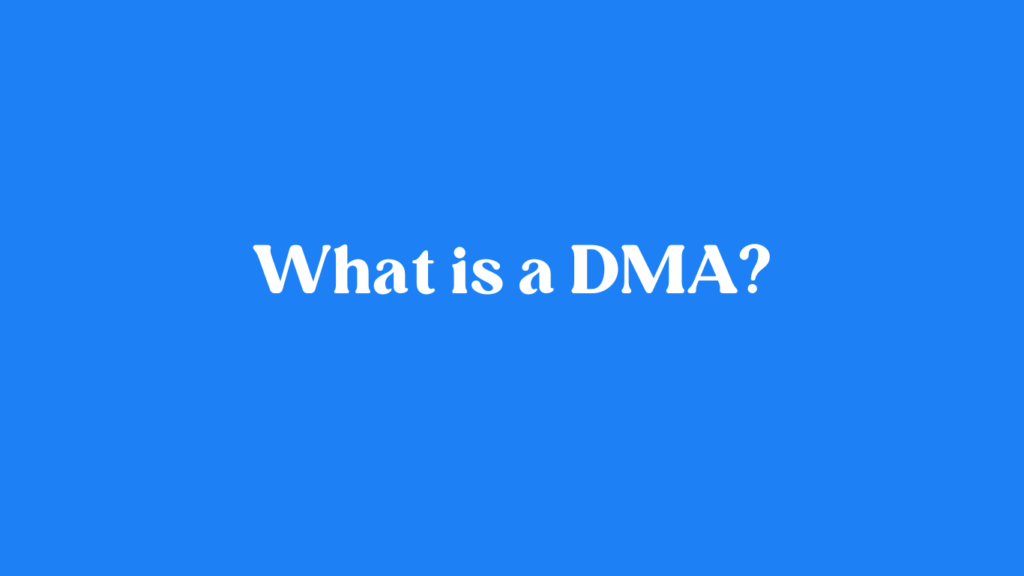
Table of Contents What is a DMA? In the world of marketing and advertising, the term DMA frequently comes up. But what is a DMA? And why is it important for businesses aiming to expand their reach? In this blog, we’ll dive deep into the concept of DMA, its role in marketing strategies, and how it can benefit your business. At Bhartiyamarketing.com, we leverage DMA insights to craft impactful campaigns that help our clients thrive. Understanding DMA DMA stands for Designated Market Area. It is a geographical region defined by Nielsen Media Research to group areas where residents receive similar television and radio broadcasting. These regions are used primarily to measure and analyze media consumption patterns. For marketers, a DMA is crucial because it represents a targetable audience based on location and media preferences. Understanding a DMA helps businesses focus their efforts on the right audience, ensuring maximum impact from their campaigns. Why Are DMAs Important in Marketing? 1. Targeted Advertising DMAs allow businesses to create highly targeted marketing campaigns tailored to specific regions. For example, a local business in New York City might focus on the New York DMA to ensure their advertisements reach the local audience effectively. 2. Cost-Effective Campaigns By concentrating efforts within a specific DMA, businesses avoid wasting resources on areas outside their service or interest zones. 3. Media Planning and Buying Media planners use DMA data to choose where to allocate advertising budgets, ensuring maximum reach and engagement. At Bhartiyamarketing.com, we use DMA insights to optimize ad placement for our clients, ensuring every dollar is spent wisely. How Are DMAs Defined? Nielsen defines DMAs based on: Media Consumption Patterns: Where people access their primary media sources. Broadcast Influence: The areas covered by dominant TV and radio signals. There are 210 DMAs in the United States, each representing a unique cluster of counties sharing similar media habits. Applications of DMA in Digital Marketing While DMAs originated in traditional media, they have significant applications in digital marketing today: 1. Geo-Targeting in Online Ads Digital platforms like Google Ads and Facebook Ads allow advertisers to target users within specific DMAs. This ensures your ads are seen by a relevant audience, increasing conversion rates. 2. Local SEO Optimization For businesses targeting specific regions, optimizing content and ads based on DMA keywords can improve local search rankings. 3. Data-Driven Insights DMA data helps marketers analyze performance metrics like: Click-through rates (CTR). Conversion rates. Engagement levels based on regional trends. Bhartiyamarketing.com specializes in using DMA analytics to refine strategies and improve results for businesses across industries. Benefits of Using DMA in Marketing Better Audience Understanding: Gain insights into local preferences and behaviors. Improved ROI: Focus your efforts on high-potential markets. Enhanced Campaign Performance: Create customized campaigns that resonate with regional audiences. Scalable Strategies: Use DMA data to expand into new markets strategically. How Bhartiyamarketing.com Can Help At Bhartiyamarketing.com, we leverage DMA insights to: Design region-specific marketing strategies. Optimize media buying for maximum impact. Use advanced analytics to measure and improve campaign effectiveness. Whether you’re a small business targeting local markets or a brand looking to expand nationally, our expertise in DMA-based marketing ensures you achieve your goals efficiently. Conclusion So, what is a DMA? It’s more than just a geographical grouping—it’s a powerful tool for marketers to understand and target their audience effectively. By leveraging DMA insights, businesses can create campaigns that drive engagement, enhance ROI, and ensure long-term success. Ready to unlock the power of DMA for your marketing efforts? Bhartiyamarketing.com is here to help you navigate the world of targeted advertising and deliver results that matter. HOME
How to Earn 1 Lakh Per Month in Digital Marketing?
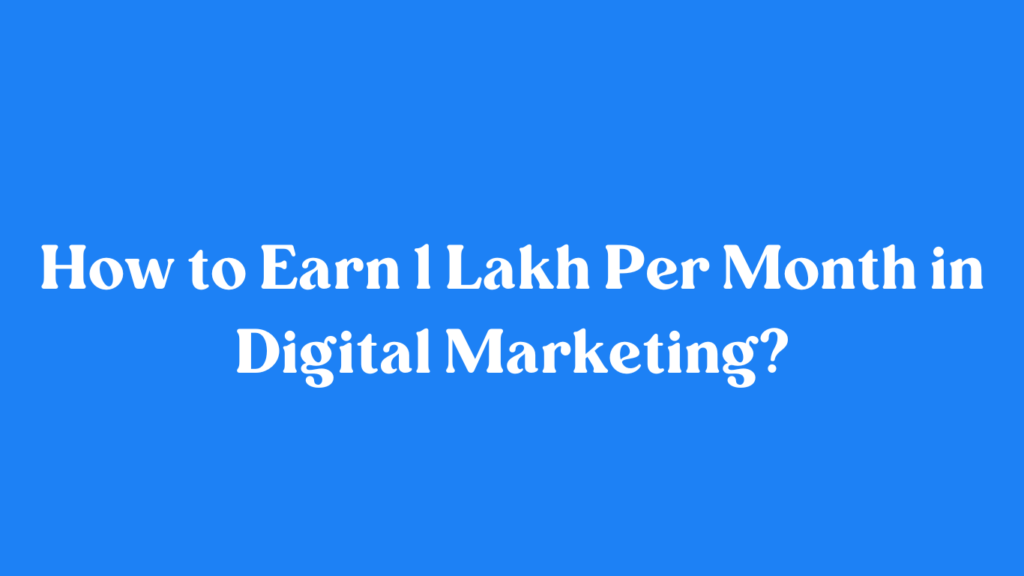
Table of Contents How to Earn 1 Lakh Per Month in Digital Marketing? Digital marketing has opened doors to countless opportunities for professionals, entrepreneurs, and freelancers to achieve financial freedom. If you’re asking, “How to earn 1 lakh per month in digital marketing?” the answer lies in strategic planning, consistent efforts, and leveraging the right tools. At Bhartiyamarketing.com, we help individuals and businesses maximize their potential in the digital space to reach impressive income milestones. Understanding Digital Marketing Digital marketing involves promoting products, services, or content online through various channels like search engines, social media, email, and websites. It’s a field that rewards creativity, analytical thinking, and consistency. Earning 1 lakh per month might seem challenging at first, but with a clear roadmap and dedication, it’s an achievable goal. Steps to Earn 1 Lakh Per Month in Digital Marketing 1. Master a High-Demand Skill The foundation of a lucrative digital marketing career is expertise in a specific skill. Some of the most profitable areas include: SEO (Search Engine Optimization) PPC Advertising Content Marketing Social Media Management Email Marketing By becoming an expert in one or more of these areas, you position yourself as a valuable resource for businesses. At Bhartiyamarketing.com, we train marketers to specialize in high-demand skills that clients seek. 2. Offer Freelance Services Freelancing is a popular way to earn money in digital marketing. Start by: Creating a strong portfolio. Listing your services on platforms like Upwork, Fiverr, or LinkedIn. Networking with potential clients through social media. Targeting international clients can also help you charge higher rates. 3. Start a Digital Marketing Agency Starting your own agency allows you to work with multiple clients simultaneously, scaling your income potential. Focus on providing services like: Website development and SEO. Social media advertising. Lead generation campaigns. At Bhartiyamarketing.com, we guide entrepreneurs in setting up and running successful digital marketing agencies. 4. Monetize Your Blog or Website Blogging can be a great source of passive income if you do it strategically. Follow these steps: Write SEO-friendly, engaging content targeting a niche audience. Use Google AdSense to display ads on your website. Partner with brands for affiliate marketing. By consistently driving traffic, you can generate significant revenue over time. 5. Create and Sell Digital Products Selling digital products like e-books, online courses, and templates can help you generate recurring income. Focus on creating products that solve a specific problem or cater to a niche audience. 6. Start Affiliate Marketing Affiliate marketing allows you to earn commissions by promoting other companies’ products. Join affiliate programs like Amazon Associates, ShareASale, or ClickBank. Promote affiliate links through your blog, social media, or email list. Focus on high-ticket products to maximize your earnings. 7. Leverage Paid Ads for High ROI If you have a solid understanding of PPC, you can generate leads for businesses and charge premium fees. Paid ads on platforms like Google and Facebook are highly effective when used correctly. At Bhartiyamarketing.com, we help professionals master PPC techniques to deliver outstanding results for clients. Key Habits for Consistent Earnings To ensure you earn consistently in digital marketing: Stay Updated: The digital marketing landscape evolves rapidly. Stay ahead by learning new skills and trends. Deliver Quality: Satisfied clients lead to repeat business and referrals. Track Performance: Use analytics tools to measure and improve campaign performance. Build Your Personal Brand: Establish yourself as an authority in your niche through LinkedIn, blogs, and webinars. Why Choose Bhartiyamarketing.com? At Bhartiyamarketing.com, we provide the tools, training, and support needed to succeed in digital marketing. Whether you’re starting out or looking to scale your income, our expert guidance can help you achieve your financial goals. Conclusion How to earn 1 lakh per month in digital marketing? The path involves mastering in-demand skills, offering valuable services, and diversifying your income streams. With the right strategies and consistent efforts, you can achieve this milestone and even surpass it. If you’re ready to start your journey, Bhartiyamarketing.com is here to help. Let’s turn your digital marketing dreams into a profitable reality! HOME
What is the best selling digital product?
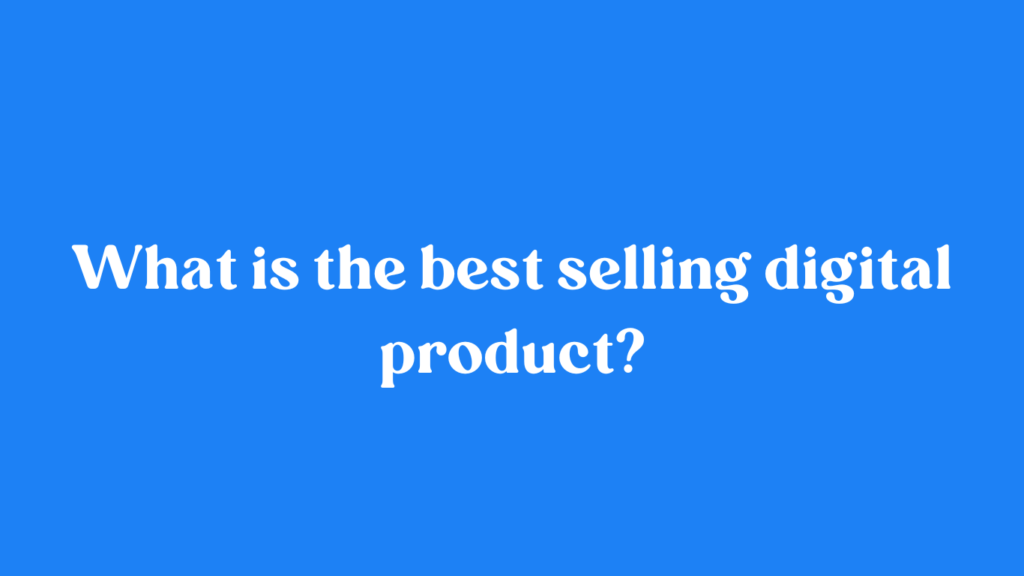
Table of Contents What Makes a Digital Product Best Selling? To identify the best selling digital product, it’s important to consider these factors: High Demand: Products that solve specific problems or fulfill needs. Scalability: Products that can be sold repeatedly without additional production costs. Ease of Distribution: Products that are easy to access and use. At Bhartiyamarketing.com, we analyze market trends to determine which digital products are most likely to succeed based on these criteria. Top Best Selling Digital Products 1. Online Courses and Tutorials With the rise of e-learning platforms, online courses have become a top-selling digital product. People are willing to invest in courses that help them acquire new skills, such as coding, graphic design, or personal development. Platforms like Udemy and Teachable make course creation accessible. Businesses can use courses to establish authority in their industry. 2. E-Books E-books are an evergreen digital product. They are easy to create and market, making them an excellent option for writers, thought leaders, and entrepreneurs. Topics like personal finance, fitness, and self-help are particularly popular. At Bhartiyamarketing.com, we help clients design and distribute compelling e-books that resonate with their audience. 3. Software and Apps From productivity tools to mobile apps, software is another best selling digital product category. SaaS (Software as a Service) products like project management tools and design platforms have especially high demand. Subscription models make this a recurring revenue stream. 4. Templates and Themes Templates for websites, presentations, resumes, or social media posts are highly sought after. Popular platforms like Canva have amplified demand for easy-to-use templates. Selling templates ensures passive income for designers and creators. 5. Digital Art, Music, and NFTs Creative digital products like music tracks, illustrations, and NFTs (Non-Fungible Tokens) have gained traction. Artists and creators can monetize their skills directly to consumers through platforms like Etsy and OpenSea. Benefits of Selling Digital Products Selling digital products offers numerous advantages: Low Overhead Costs: No physical inventory or shipping needed. Global Reach: Your product can reach a worldwide audience instantly. Scalability: Sell unlimited copies without additional costs. Passive Income: Once created, digital products generate ongoing revenue. At Bhartiyamarketing.com, we guide you in creating and marketing digital products that maximize these benefits. How to Market Your Digital Product Marketing plays a crucial role in making your digital product a bestseller. Here are some strategies: Leverage Social Media: Showcase your product on platforms like Instagram and LinkedIn. SEO Optimization: Ensure your product is discoverable on search engines. Email Campaigns: Build a subscriber list and send targeted promotions. Collaborations: Partner with influencers or bloggers in your niche. With Bhartiyamarketing.com, you’ll get expert support in implementing these strategies effectively. Conclusion So, what is the best selling digital product? While online courses, e-books, and software top the charts, the best product for you depends on your expertise, target audience, and business goals. The digital marketplace is vast and full of opportunities for those who know how to tap into it. If you’re ready to create and market your own digital product, Bhartiyamarketing.com is here to help. Let’s turn your ideas into bestsellers and grow your online presence with confidence. HOME

